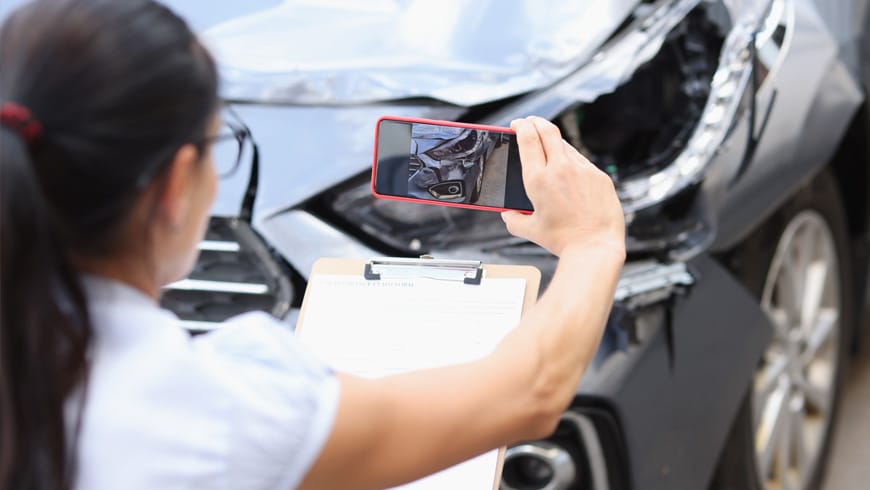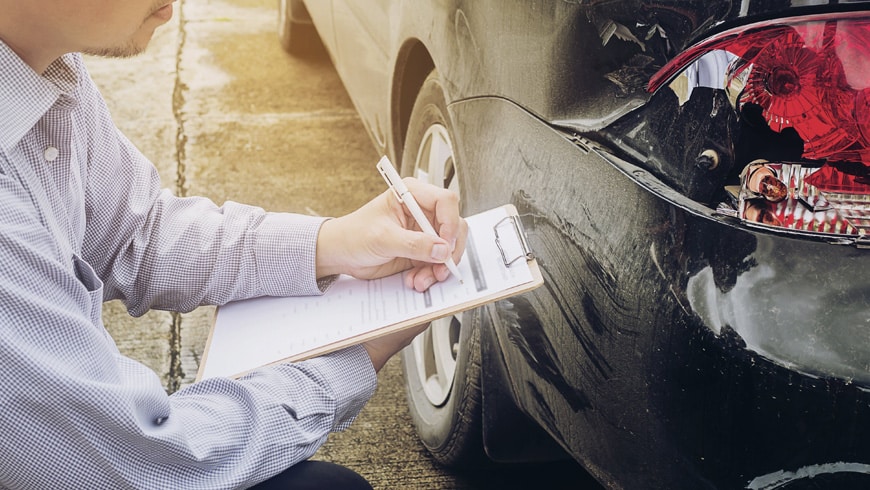So you had a claim and your car insurance company came back with what you feel is an insufficiently low settlement offer for the damages.
What can you do? Do you have to take their offer?
You actually have a number of options that can proactively improve the likelihood of receiving a better settlement. Here’s what you need to do to help your chances.
Steps to Take When You Disagree With a Settlement Offer
1. Review Your Policy
Start by carefully reviewing your insurance policy.
Car insurance policies all have slightly different language used in the contract, but there is a standard form that a lot of companies use. It’s called the ISO form and here’s what it says about dispute resolution:
If we and you do not agree on the amount of loss, either may demand an appraisal of the loss. In this event, each party will select a competent and impartial appraiser. The two appraisers will select an umpire. The appraisers will state separately the actual cash value and the amount of loss. If they fail to agree, they will submit their differences to the umpire. A decision agreed to by any two will be binding.
This clause outlines a formal process for resolving disputes but this is actually one of the last options you want to invoke.
Before you go nuclear on your company, there are a number of things you can do and that starts with documentation.
2. Document Everything
Thorough documentation is your best ally when disputing a damage assessment. Here’s how to build a compelling case:
Take Comprehensive Photos
- Capture wide-angle shots of the entire vehicle to show the context of the damage.
- Take close-up photos of each damaged area from multiple angles.
- Include images of any less obvious damage, such as undercarriage issues or alignment problems.
- Use good lighting and ensure your photos are clear and in focus.
- If possible, include a ruler or common object in some photos to provide scale.

Write Detailed Notes
Create a thorough accident report for your records, including:
- Date, time, and location of the incident
- Weather conditions and any contributing factors
- A step-by-step account of what happened
- Names and contact information of any witnesses
- Badge numbers and names of responding police officers, if applicable
Keep a Running Log
Maintain an ongoing record of issues related to the accident:
- Note any new problems that arise after the initial incident, such as strange noises or handling issues
- Record all communications with your insurance company, including dates, times, and the names of representatives you speak with
- Document any expenses you incur due to the accident, including rental car costs or missed work
Gather Supporting Documents
Collect any relevant paperwork:
- Police reports
- Medical records, if injuries were involved
- Receipts for any repairs or related expenses
- Written estimates from independent mechanics or body shops
Use Technology to Your Advantage
Consider these tech-savvy documentation methods:
- Use your smartphone to record video walkthroughs of the damage
- Install a dashcam for future incidents
- Use note-taking apps to keep all your information organized and easily accessible
Remember, the goal is to create a clear, factual, and comprehensive record of the incident and its aftermath.
This detailed documentation serves two crucial purposes:
- It refreshes your memory when discussing the claim with your insurer
- It provides concrete evidence to support your case if you need to escalate the dispute
By taking these steps, you’re not just preparing for a potential disagreement – you’re also creating a valuable record that can help expedite your claim and ensure you receive fair compensation for your damages.
3. Get a Second (and Third) Opinion
Consider getting at least one other repair estimate from a reputable auto body shop. Their estimate can provide valuable leverage if it differs significantly from the insurance company’s assessment.
Multiple repair estimates can also potentially find damage that was missed by the insurance adjuster’s initial inspection.
Adjusters are human and they make mistakes, too. Having one or two other damage estimates can put the ball in your court when trying to get a higher damage settlement.

4. Communicate with Your Insurer
Armed with your documentation and additional repair estimates, contact your insurance company.
Explain your concerns clearly and provide evidence to support your position. Be polite but firm. Your insurance company is not your enemy and coming across overly aggressive is not going to help your case.
Sometimes, a simple conversation can resolve misunderstandings or oversights. If the third-party estimates do in fact discover damage that was not on the adjuster’s report, you have a good case for a higher settlement.
What If You’re Still Not Satisfied?
If direct communication doesn’t yield results, you have several options:
1. File a Formal Complaint
Most insurance companies have a formal complaint process. Use it. This often involves submitting your concerns in writing to a designated department.
2. Contact Your State’s Insurance Department
If you believe the insurer is acting in bad faith, reach out to your state’s insurance department. They can provide guidance and may even intervene on your behalf.
3. Consider the Appraisal Clause
Remember that appraisal clause we mentioned earlier (the nuclear option)? If all else fails, you might need to invoke it. Be aware that this process can be time-consuming and potentially costly, as you’ll need to pay for your own appraiser.
A Real-Life Scenario
Let’s consider a hypothetical situation.
Imagine your car was hit while parked, resulting in damage to the rear bumper and trunk. The insurance adjuster estimates repairs at $1,500, but your trusted auto body shop says it will cost $2,300 to fix properly.
In this case, you’d start by documenting the damage thoroughly. Take clear photos from multiple angles and get a written estimate from your repair shop detailing why the repairs will cost more.
Then, contact your insurance company with this information.
Explain (in a non-aggressive manner) that while you appreciate their assessment, you have concerns about the adequacy of the repair estimate.
Often, providing this additional information can lead to a reevaluation and a fair resolution.
Remember, the customer service representative on the other end of the phone is not intentionally trying to rip you off. Laying out your case in a clear, confident manner goes a long way in resolving these types of disputes.
A Wrap Up
You have rights as a policyholder that you are fairly treated and reimbursed for damages. By understanding your policy, documenting evidence, and communicating effectively, you can work towards a resolution that adequately addresses the damage to your vehicle.
Insurance is meant to protect you and don’t be afraid to advocate for yourself if you believe the assessment doesn’t reflect the true extent of the damage.
It may take a little patience and persistence, but a cool demeaner and thorough documentation will put you in a great position to receive a better settlement offer.
 During his career as an independent insurance agent,
During his career as an independent insurance agent,